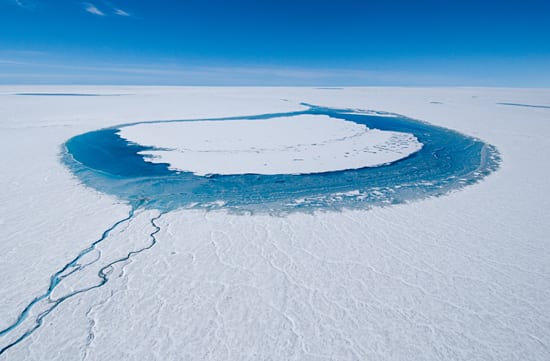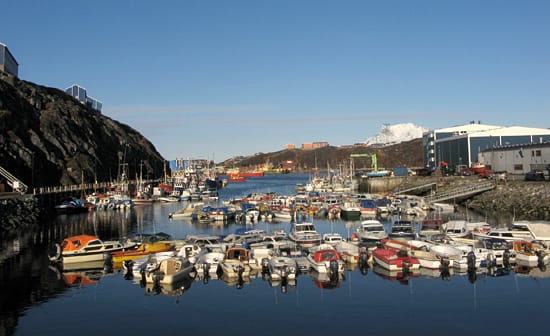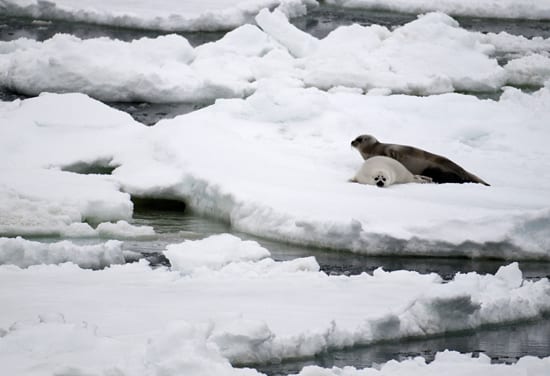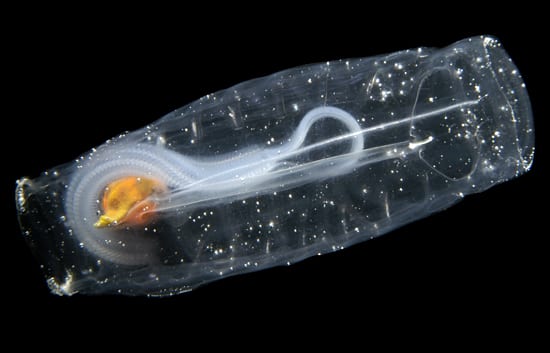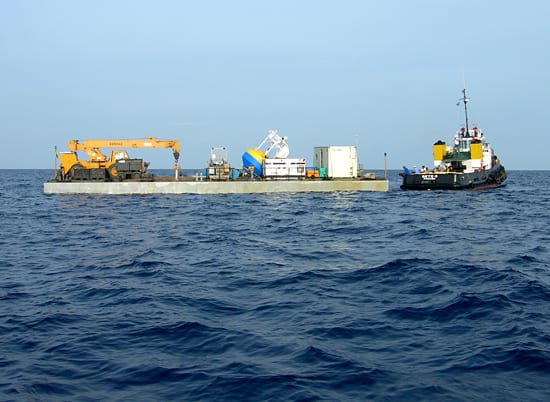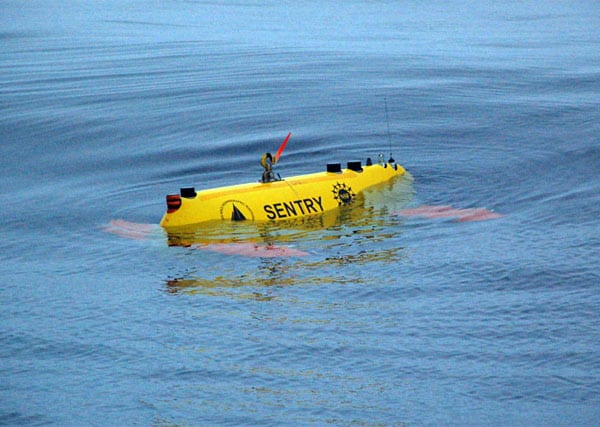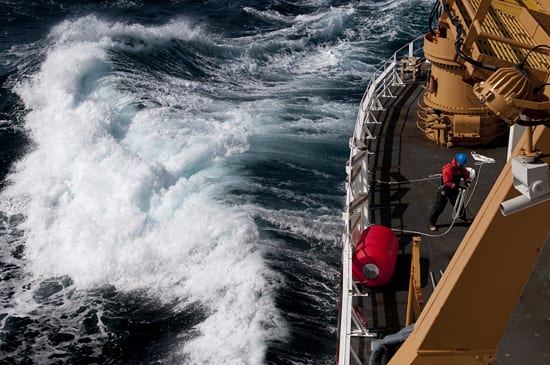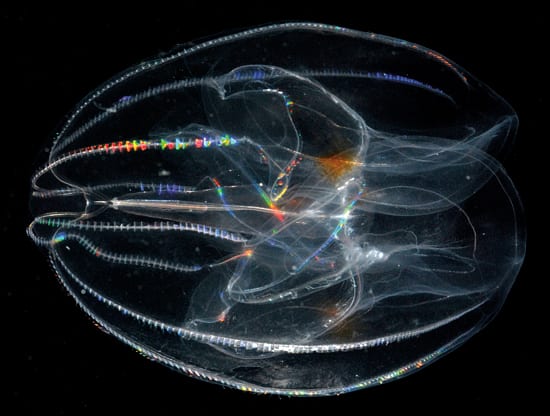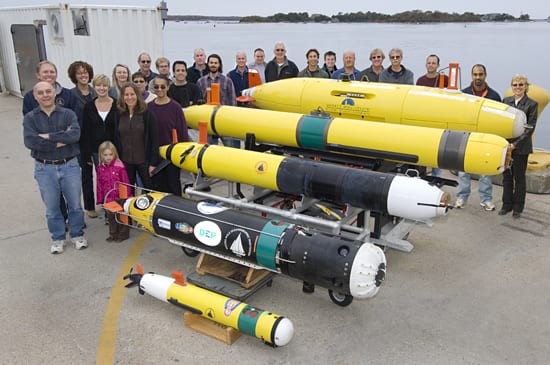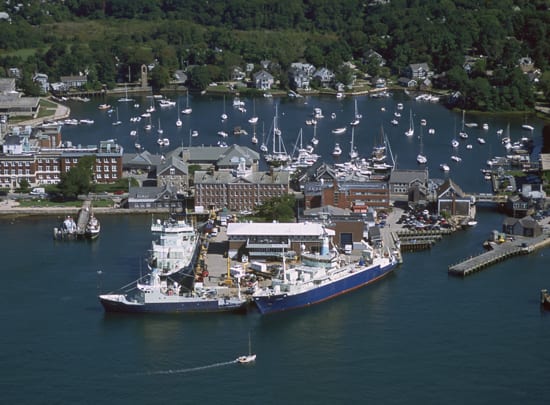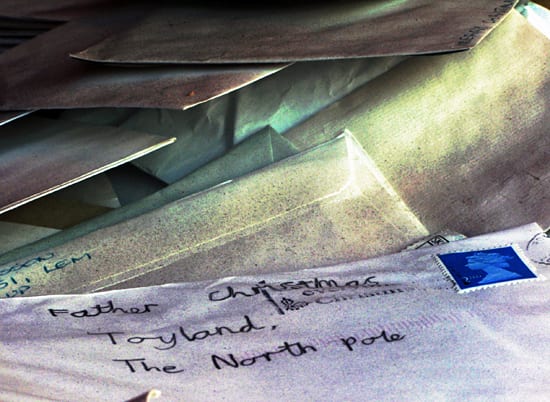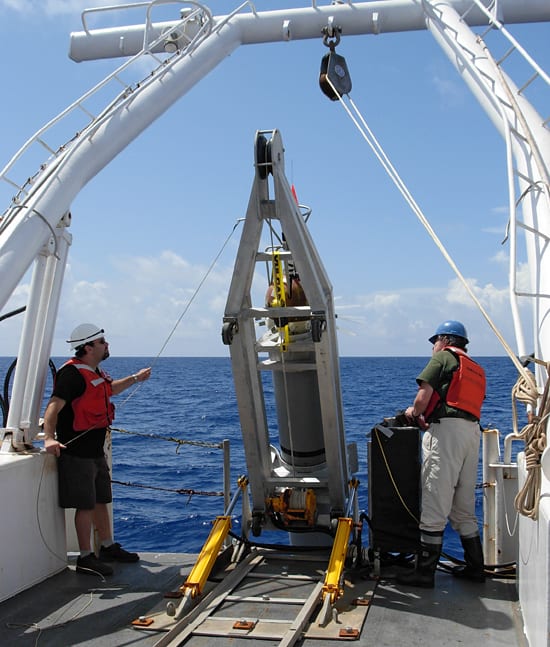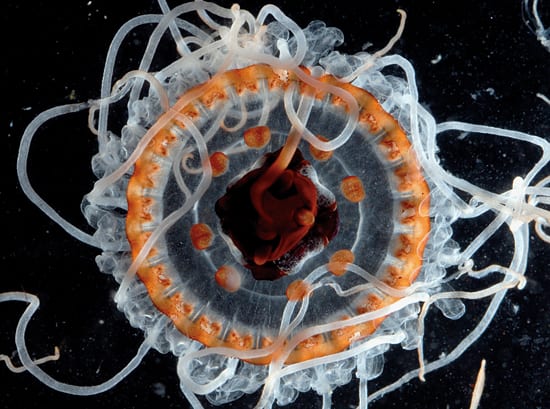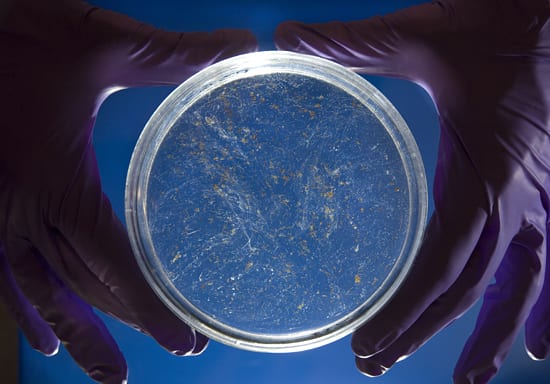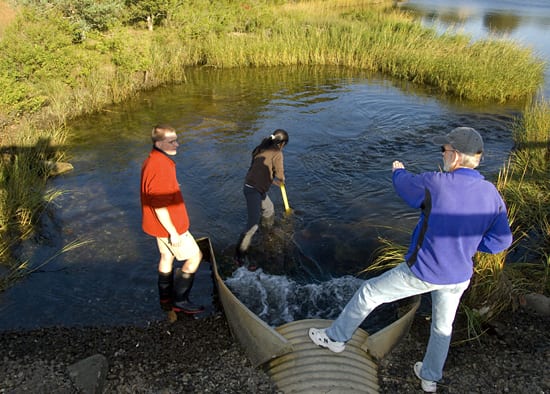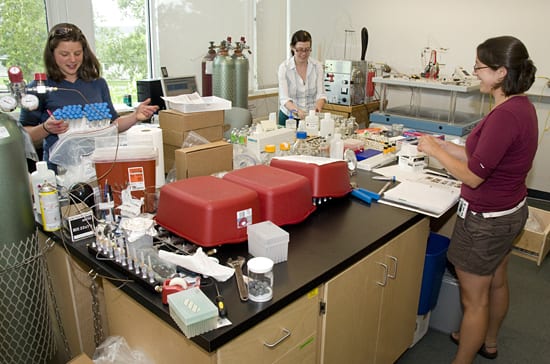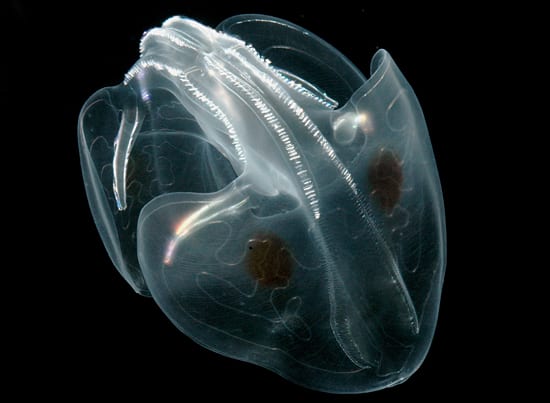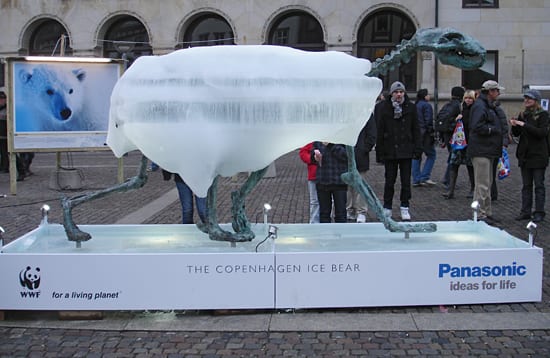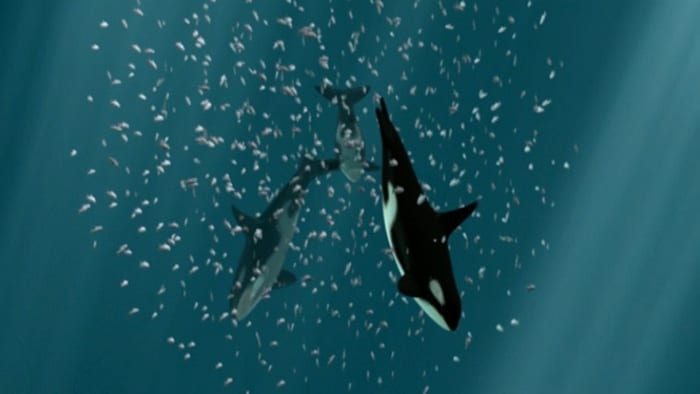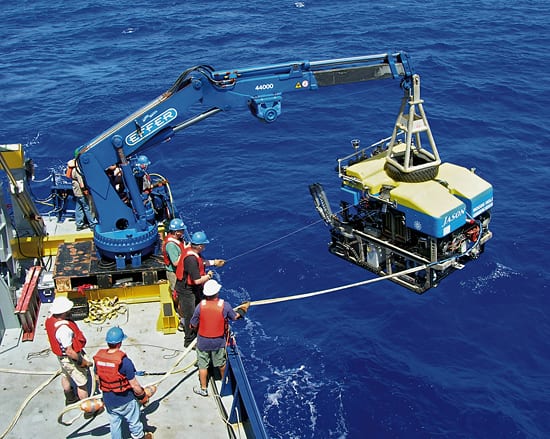Multimedia Items
Ice lake
Greenland — the world’s largest island — is also home to one of the world’s largest ice sheets (after Antarctica). If Greenland’s two-mile-thick ice sheet melts completely, it would ultimately…
Read MoreCalm harbor
This small boat harbor is located in one of the fjords at Nuuk, Greenland, near where the R/V Knorr was docked in preparation for a cruise around Greenland. The mountain…
Read MoreCurious ribbons
Researchers aboard the U.S. Coast Guard icebreaker Healy spotted these two ribbon seals — a mother and her fat pup — during an April 2009 cruise to study how climate…
Read MoreThe rhythm of salps
Salps—transparent organism that range from 0.5 to five inches long—are the subject of MIT-WHOI Joint Program graduate student Kelly Rakow Sutherland’s PhD dissertation. Observing them in their habitat off the Pacific…
Read MoreResearch barge?
A barge may be an unconventional platform for oceanographic mooring work, but members of the Physical Oceanography and Applied Ocean Physics and Engineering departments — John Kemp, Jim Ryder, Paul…
Read MoreREMUS in Photos
remus_packard_10.21.05_20920_99316.jpg
Read MoreRise and shine
A marine science technician aboard the iceabreaker USCG Healy pushes a conductivity/ temperature/depth (CTD) recorder during a spring 2009 research cruise to study the Bering Sea ecosystem. A CTD is…
Read MoreSentry in Photos
Sentry in Photos
Blue hard hat, white caps
USCGC Healy boatswain’s mate Ray Mendoza arranges ropes during a spring 2009 research cruise, led by WHOI biologist Carin Ashjian, to study the Bering Sea ecosystem at a time of…
Read MoreBright lights
Ctenophores (comb jellies) swim by beating rows of tiny combs along their bodies. Sunlight—or a photographer’s strobe—on the combs creates diffraction patterns—flickering rainbows running down the rows. Most ctenophores are…
Read MoreProud parents
The Ocean Systems Lab group pose on the WHOI dock with a sample of their REMUS (Remote Environmental Monitoring UnitS) vehicles, which are designed for coastal monitoring as well as…
Read MoreA bustling science seaport
An aerial view of the village of Woods Hole, with the Institution dock facilities at the center. Woods Hole Oceanographic Institution (WHOI) research vessels Knorr, Oceanus, and Atlantis are at…
Read MoreSanta’s mailbox
A stack of letters in “Santa’s Mailbox” in Nuuk, Greenland await delivery to the North Pole. A giant red mailbox located in downtown Nuuk stands right outside the town’s post…
Read MoreTest cruise
Lou St. Laurent and John Toole lower a High Resolution Profiler over the side of the R/V Endeavor during a September 2009 cruise. The instrument was being tested in preparation…
Read MoreMother ship beams up prey
The jellyfish Atolla lives worldwide in the deep sea, where light levels are very low. The jellyfish is bioluminescent—emitting blue-green light—and so are most of its prey. Scientists think that…
Read MoreSinking particles
Andrew McDonnell, a joint program student in marine chemistry and geochemistry, holds a jar full of sinking particles collected at 150 meters depth during a cruise along the West Antarctic…
Read MoreOut of the classroom, into the pond
WHOI Senior Scientist Larry Pratt of the Physical Oceanography Department and MIT-WHOI Joint Program students Wilken-Jon von Appen and Ping Zhai test a volume flow rate formula developed in one…
Read MoreInvestigating the chemistry of a pond
Cara Manning (center), a 2009 Summer Student Fellow from the University of Victoria, Canada, works in the lab. She investigated how much nitrous oxide — a potent greenhouse gas —…
Read MoreNeptune’s mask
Depending on interpretation, this view of the ctenophore Ocyropsis maculata looks like either an ancient Greek helmet or a clamshell bucket for earth-moving machines. This large (to 6”) predator uses…
Read MoreA melting message
British sculptor Mark Coreth carved a polar bear out of ice, with a bronze skeleton inside, in hopes of sending an environmental message when the Arctic animal art piece melts.…
Read MoreCarousel Feeding
Orcas use coordinated movements and tail slaps to stun herring during carousel feeding. This video shows data captured by WHOI’s D-tags tracking their behavior.
Read MoreSurviving melting ice
A recent U. S. Geological Survey study—using data from WHOI and other sources—determined that climate change in the Arctic is dramatically reducing polar bears’ survival and reproductive rates. The study…
Read More
